The Curious Customs of New Year’s Eve
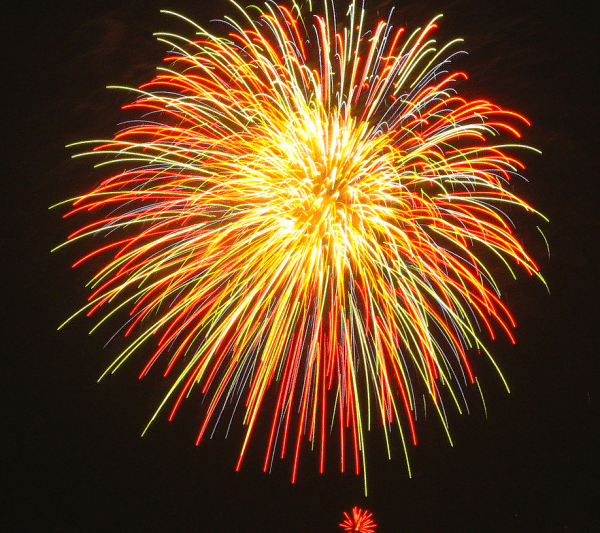
Think New Year’s Eve and and parties, firework displays and boisterous renditions of Auld Lang Syne might come to mind. Indeed, these customs are common the world over but here are some of the more curious traditions that we Europeans still keep in the hope of good health and wealth for the coming year.
Scotland – Hogmanay
There are many disputes as to the origins of the word ‘hogmanay’, but one thing that is widely agreed upon is that Scotland is one of the best places to see in the New Year—festivities in Scotland are so elaborate that both the 1st and 2nd of January are public holidays. In fact, until the mid 1950s, Hogmanay was the major Scottish winter festival; after the 16th century reformation, the Scottish Presbyterian Church frowned upon Christmas, considering it too Catholic and Popish a celebration.
Each year, the Scottish capital of Edinburgh hosts a massive party that lasts several days and sees thousands of people from around the world celebrating in the streets. After a couple of days of warm up, on the 31st December, the city’s main street is the focus of the street party; as the clock strikes midnight, a canon is fired from the castle, fireworks fill the sky and there’s music and dancing till the morning.
Throughout Scotland, first-footing is the most traditional of Hogmanay customs. Starting immediately after midnight, the first person to cross the threshold of a friend or neighbour’s home is thought to bring luck for the rest of the year, especially if they bring symbolic gifts of coal, shortbread, black bun, salt and of course, whisky. Dark haired male first-footers are particularly welcome—they’re believed to bring the best luck –a throwback to the days when blonde-haired Vikings were to be avoided.
Auld Lang Syne, now a common New Year’s Eve custom across the world, originates in Scotland. The celebrated Scottish poet, Robert Burns reinterpreted this traditional Scottish poem in the 18th century and it was later set to music. After midnight, people stand in a circle, link arms, and sing Auld Lang Syne, they then drink a ‘dram’ of whisky and wish each other a ‘guid new year.’
Spain – Nochevieja
Spaniards have a reputation as a people who enjoy a good party and at Nochevieja (literally translated as ‘Old Night’), they don’t disappoint. Dressed up in their finest, the evening begins with dinner at home with family and friends. As midnight approaches, most people take to the streets and head to the main square—the ‘plaza’ is the obligatory heart of any village, town or city in Spain.
For those who stay at home, the TV channels are tuned into the national station which broadcasts from the Puerta del Sol in the capital, Madrid. The focus via the nation’s television screens is the clock tower on the 18th century Post Office building which today houses the Presidential Council of the Community of Madrid. In the square itself, as in all the main squares throughout the country, thousands of people huddle together, impatiently awaiting the twelve chimes of midnight when, at each strike of the clock, they pop a grape into their mouth.
‘Las doce uvas de la suerte,’ (the twelve lucky grapes) is a tradition that dates back to the late 19th century and is said to bring prosperity and fortune for the 12 months of the coming year. It was also a clever way for grape producers from Alicante (north-eastern Spain), to rid themselves of their surplus harvest that threatened to rot before it was sold. It might seem a simple task to swallow one grape per chime, but I’ve tried it and believe me, it takes some doing! The Spanish take this ritual very seriously and often peel or deseed the grapes prior to the final hour to make the task easier.
In true Spanish spirit, the party goes on throughout the night and finishes when the revellers head to the cafes for the traditional Spanish end to a good night out; a breakfast of churros dipped into a thick dark and delicious chocolate sauce.
Germany – Silvester
Before the Gregorian calendar was introduced in the 16th century and the 31st December became known as New Year’s Eve, it was widely celebrated as the feast day of Saint Silvester, a 4th century pope turned saint. In Germany, the New Year’s Eve celebrations are still named after this saint.
A rather bizarre New Year’s Eve tradition is the German ‘Bleigießen’, which involves pouring molten lead into cold water and interpreting the shapes it forms, a little like the practice of reading tealeaves. Here, the shapes are made as predictions for the coming year; a ball is thought to symbolise luck that will roll your way but beware of the cross—it is said to mean death!
At the New Year’s Eve table, pork is eaten for good luck and sauerkraut is believed to bring blessings of wealth for the New Year—before the meal commences, people wish each other as much goodness and money as the number of shreds of cabbage in the pot.
For those who stay at home, an indispensible German tradition involves watching a 14-minute 1963 British comedy sketch called ‘Dinner for One.’ Broadcast annually on German TV at New Year’s Eve since 1972, it’s won the Guinness World Record for being the most repeatedly aired TV show in history.
Italy – Il Capodanno
In the south of Italy the expression, ‘out with the old’ is taken quite literally, where it is customary to throw old objects out of the kitchen window. Given that many Italians live in apartment buildings, this is a warning to watch your head if you decide to visit at this time of year!
Another curious custom is to wear red underwear to see in the New Year—and not any red underwear—it must be new and gifted. This practice is thought to date back to medieval times when red was considered the colour of good luck but the wearing of red garments was punished by a one-way trip to the gallows. To avoid such an end, red was worn out of sight as underwear.
As in all Italian festivities, food shared with family and friends plays a major role. For Capodanno, the obligatory dish is lentils served with cotechino—a large spicy sausage, or zampone—stuffed pig’s trotters. The lentils symbolise abundance of money and good fortune and as in Germany, pork symbolises richness in life for the coming year.
At 8.30pm, Italian homes turn on the TV to watch the President make an official address to the nation, wishing all a prosperous New Year. As midnight approaches, people take to the streets and when the clock strikes midnight they greet each other saying, ‘Auguri!’ meaning, ‘best wishes.’ Fantastic firework displays fill the sky and there is much singing and much dancing until the sun rises on the New Year.
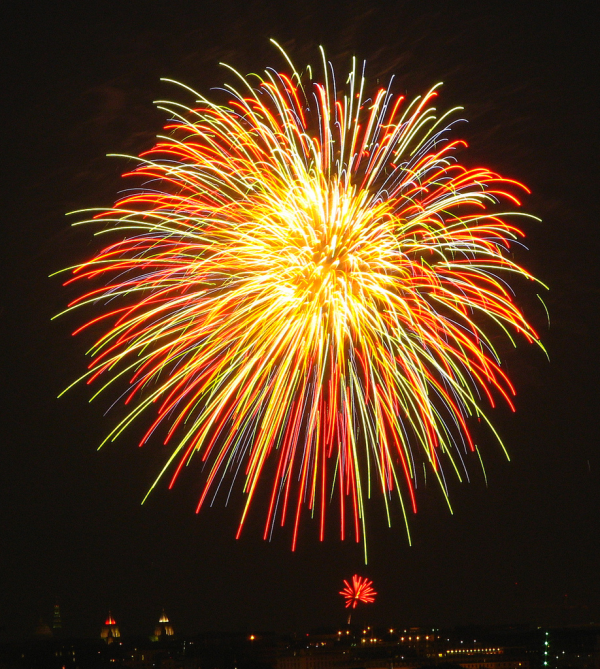
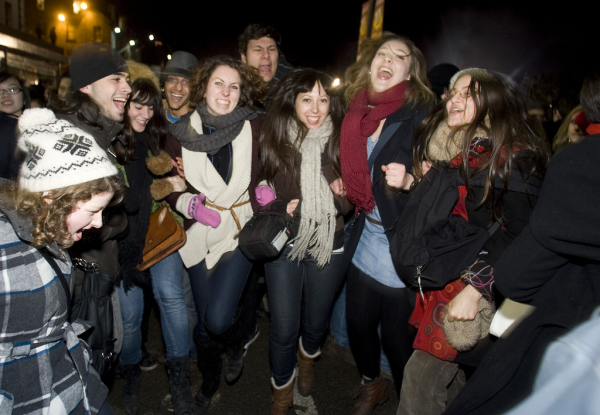

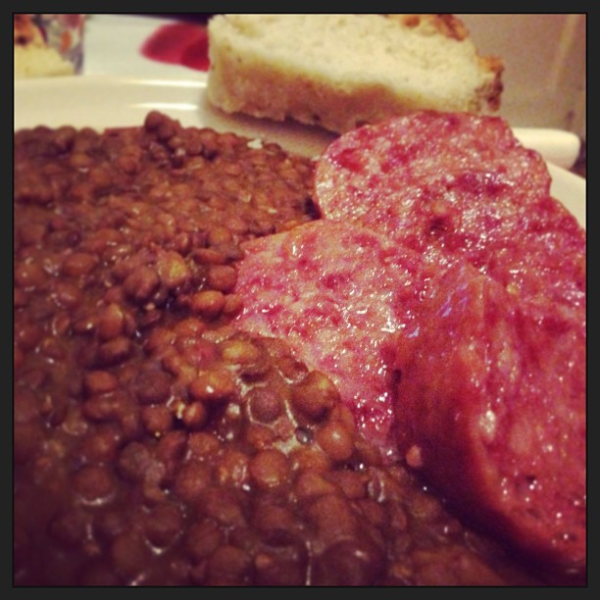









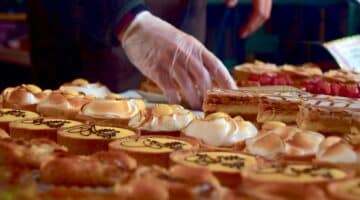
Informative!!!… Thanks!!!…
Best Wishes for The New Year!~